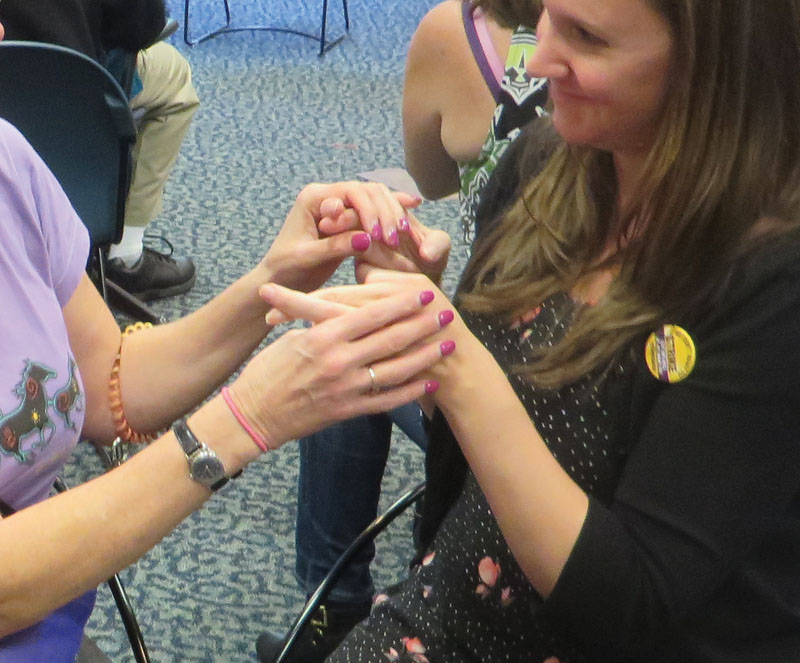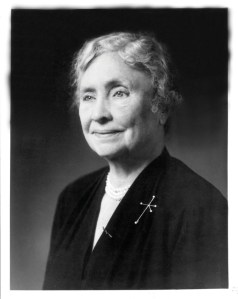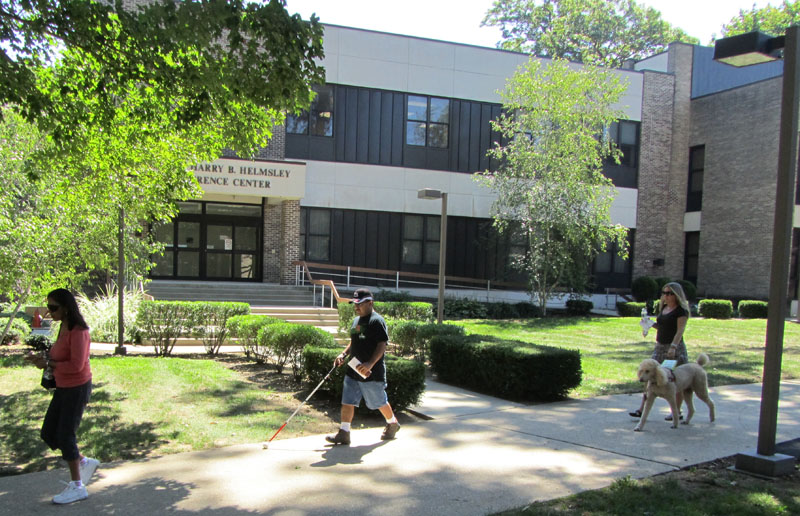The Helen Keller National Center opens minds and hearts

Sands Point’s Helen Keller National Center has developed into the only national comprehensive vocational rehab program for the deaf and blind
A lot can change in 50 years. Back in 1967, the United States was taking its first step towards providing better lives for the deaf-blind community with the passage of a set of amendments to the Vocation Rehabilitation Act, which, according to a bill signed by President Lyndon Johnson, was meant to “authorize assistance in establishment and operation of a national center for deaf-blind youths and adults.” Fast forward to today, the center’s namesake was long considered an anomaly in society, but in fact, more than 1 million adults around the world have a combined vision and hearing loss.

”At first, there was only Helen Keller,” says Allison Burrows, coordinator of information services at the Helen Keller National Center. “[People thought] she was the only deaf-blind person in the world. But guess what? That’s not true.”
The center launched just one year before Keller’s death in 1968, but has managed to positively impact countless members of the deaf-blind community by embracing the same qualities that made Keller so extraordinary: positivity, perseverance and the desire to overcome all odds.
“We want to change people’s mindsets around their perceptions about deaf-blindness,” says Susan Ruzenski, the center’s executive director for deaf-blind youths and adults. “If you have limited vision or hearing, you’re going to be working, you’re going to be able to succeed in life and be independent. You can do anything anybody else can do. You’re just going to do it a little bit differently.”

Functioning as a training tool and de facto school, the center offers comprehensive assistance for tasks ranging from cooking, to arts and crafts, to job coaching and mock interviewing, with the ultimate goal of giving its students the confidence to live independently and do the things they want to in life. According to Ruzenski, none of this would be possible without the dedicated staff members who, through their hard work and daily interactions, often learn just as much as the students do.
“People have various backgrounds because we have a very multi-disciplinary program. So the fields that [staff members] have studied are varied. It could be a rehab teacher, orientation and mobility—rehab counseling is another area,” Ruzenski explains. “Most often, the graduate programs that people attend—or the undergraduate programs—don’t really provide training on how to work with individuals who are deaf-blind. So a lot of what people learn that is specific to what’s unique about working with people who are deaf-blind, happens on the job. It’s really through mentoring, coaching, experience, a whole team approach, and we learn a great deal from the people we work with every day, too.”

A common misconception about the deaf-blind, Burrows notes, is that they have absolutely no vision or hearing whatsoever. In actuality, though each of the center’s students is legally deaf and legally blind, they have vastly different levels of vision and hearing loss; some are partially blind and fully deaf while others are partially deaf and mostly blind, and so on. Because of this, the center tailors its programs to suit the individual needs of each student to ensure that they get the most out of their tenures there.
“I’ve always wanted to paint,” says Linda Gail Jones, a student with slight vision in one eye and significant hearing loss. “I’m in the art class and I painted my first picture, with the help of the art teacher. But I pretty much did it myself. Everybody is so supportive, telling me how wonderful I’m doing. It means a lot. Now I think I can do anything.”

“My favorite has been cooking—it’s so fun,” adds Elizabeth Aguilera, a student who communicates through sign language. “I’ve also learned how to communicate. I have technology class and I’ve learned a variety of skills there. I find it to be really beneficial and exciting. I think it’s definitely helped my confidence and independence. It’s really been life-changing.”
The center’s status as the only comprehensive vocational rehab program for the deaf-blind is a badge of honor, but also, Ruzenski says, somewhat regrettable. Though there are 12 regional representative offices through the United States, the center has hopes to expand its reach even further, which Ruzenski believes will require more funding.
“We do receive federal funds. That helps to definitely support us. We have appropriation every year from the government,” says Ruzenski, who also noted that Senator Elaine Phillips recently contributed $100,000 towards repairing the center’s air conditioning. “But it doesn’t meet the need of what we see as what’s required for this group of citizens in the United States. And we have big dreams and visions about getting those services out there across the country, and we’re doing it, but we need more resources to do it.”

Ultimately, the directors and staff members at the center are proud to acknowledge its 50th anniversary, but are also quick to point out their slogan of “honor the past, celebrate the future.” With technology and societal awareness evolving rapidly, the center is looking towards the dedication of both its staff and its students to create more success in the years to come.
“We’re looking forward to the next 50 [years],” says Ruzenski. “The people who are part of this community are really who we’re celebrating, because despite all of those closed doors and those low expectations, and the hardship of overcoming that, they have achieved a great deal and they’re a part of this organization.”
For more information on the center, visit www.helenkeller.org/hknc.































